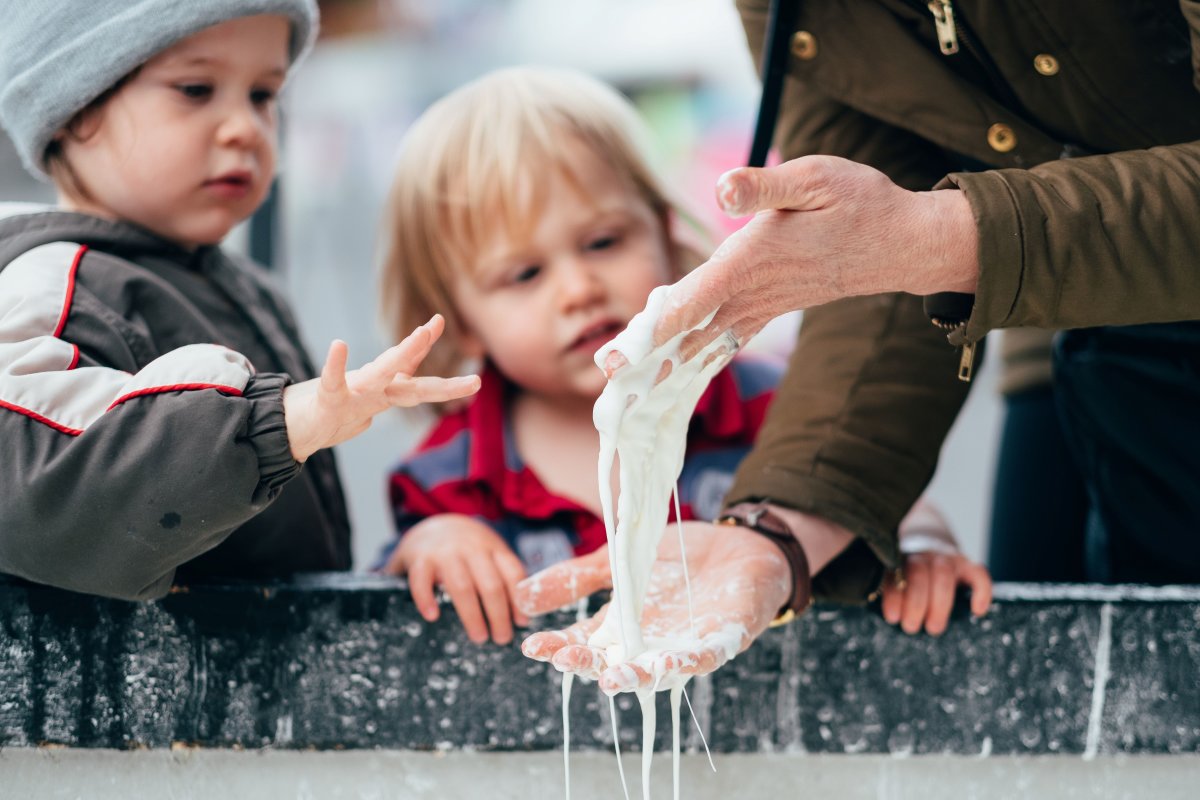Meet the Team
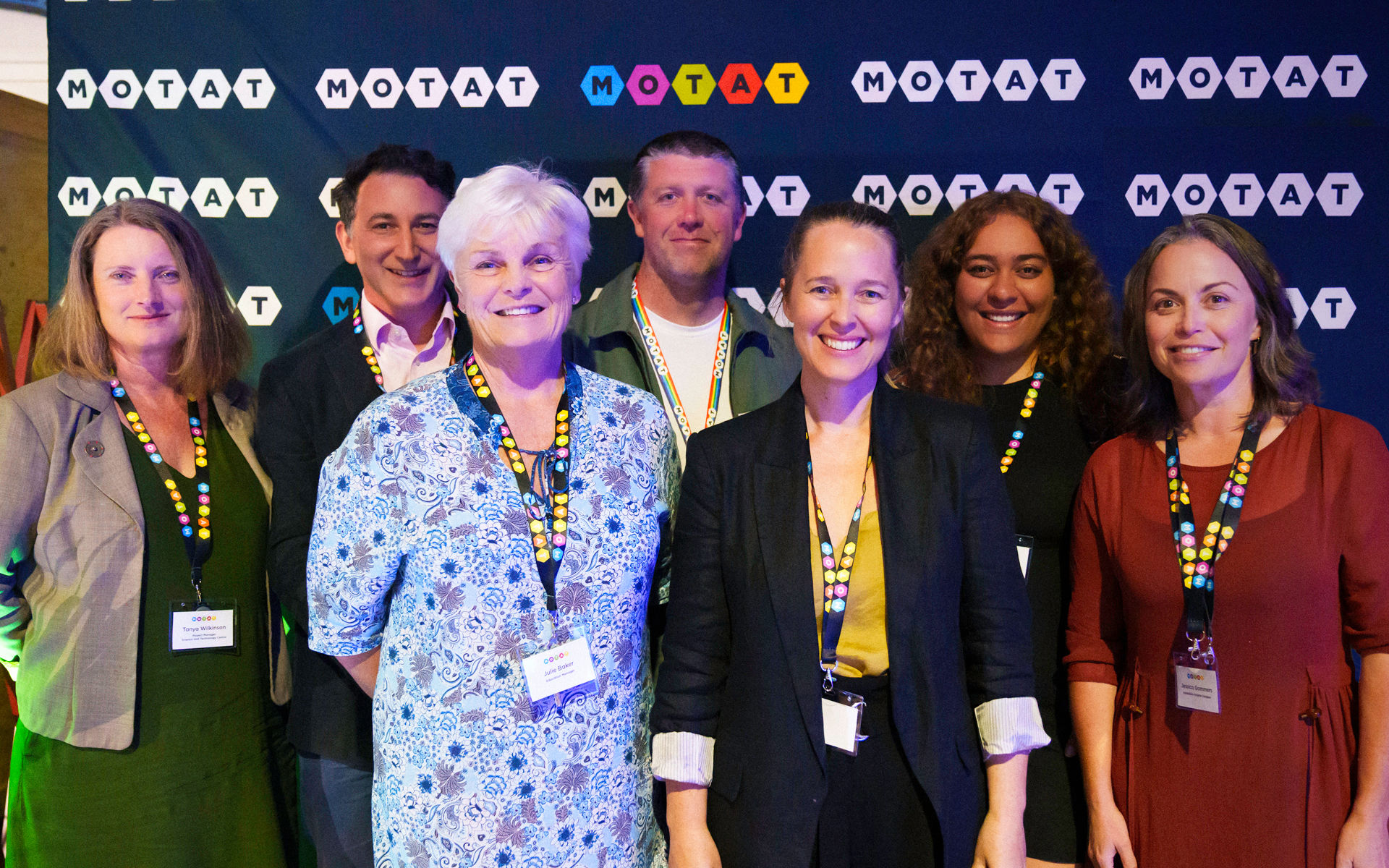
Almost a year into their research and development for the new centre, the project team introduce themselves and give us a taste of what to expect. Here they are, pictured L-R at MOTAT’s Supercharging the Future of Aotearoa event: Tanya Wilkinson, Project Manager; Simon Gould, Exhibitions Manager; Julie Baker, Education Lead; Scott Parker, 3D Exhibition Designer; Esther Tobin, Senior Exhibition Developer; Reni Broughton, Exhibition Developer mātauranga Māori; and Jess Gommers 2D Exhibition Designer. Absent: Phoebe Drayton, Content Developer.
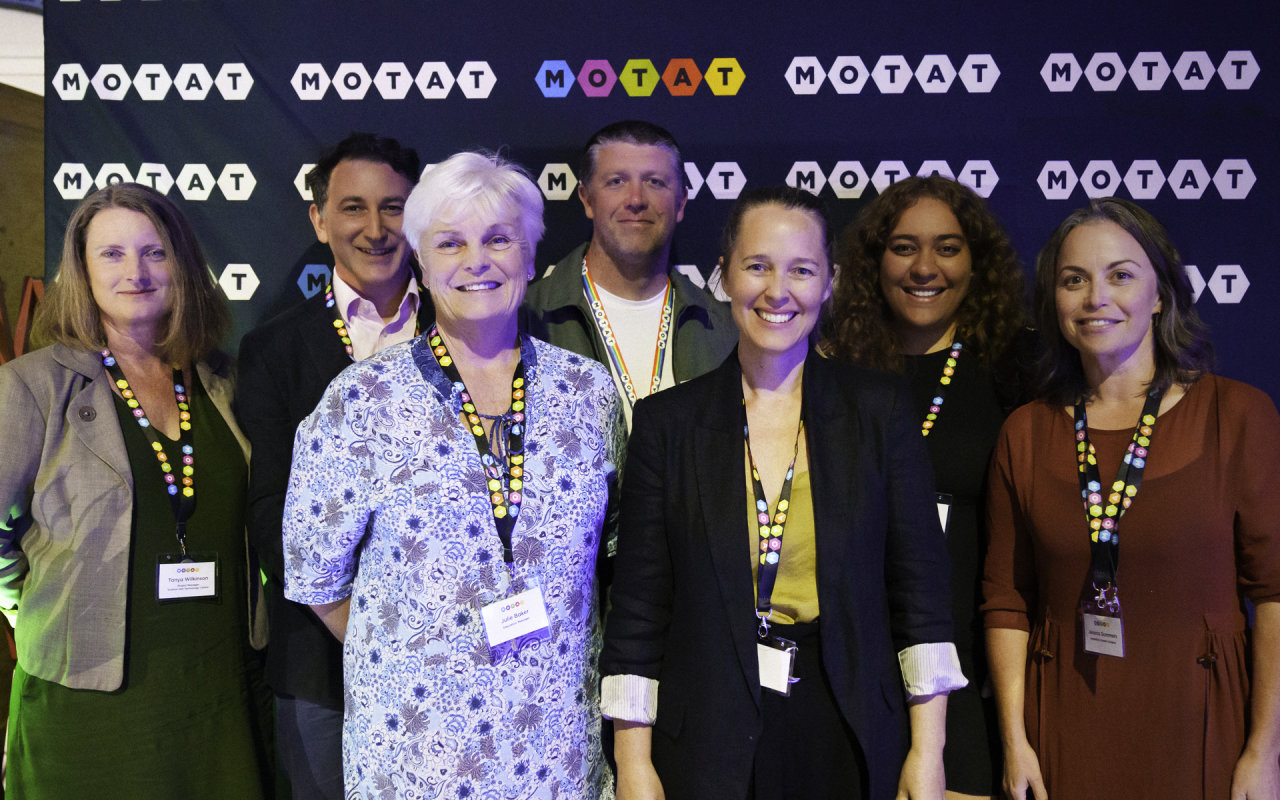
Tell us about your role in the team and what you bring to this project?
“I am a trickster, disruptor and innovator – much like Māui.”
Esther Tobin: My role is Senior Exhibition Developer. I’m responsible for ensuring the experiences and content we deliver within science and technology centre meets the needs of our audiences. The task is ensuring everything on the floor is relevant, engaging, and supports their physical, social, learning, emotional and spiritual needs – yes spiritual too! My background is in a range of creative industries, I studied at Elam, and worked in film and documentary making before getting the museum bug.
Reni Broughton: Kia ora, Ko Reni Broughton tōku ingoa. I am the exhibition developer mātauranga Māori. I am a trickster, disruptor and innovator – much like Māui. I move fluidly between Te Ao Māori and Te Ao Pākeha, poking and prodding for opportunities to challenge the status quo, to change the world and to create fun and dynamic futures. I am a storyteller, a designer and a delightful menace.
Julie Baker: I'm the Education Lead, which means I bring my 30-plus years of experience in New Zealand’s education sector into the development process, making sure we build a centre that is relevant and compelling for our school visitors. I have also worked as a mechanical engineer – a useful set of skills to bring to the development process!
Tanya Wilkinson: I have worked in museums and art galleries for many years, and my role is Project Manager. I’m responsible for managing timelines and budgets for the design and development of the exhibits and making it all happen. I work with lots of people like exhibition developers, designers, structural engineers, quantity surveyors, digital producers, writers, fabricators, and many more.
Jess Gommers: I am a designer, and my role is to help develop and deliver the exhibition experience through use of colour, typography (words) and a variety of production materials. I use design as a tool to engage and encourage you, our audience, to see and understand things you may not even know about yet.
Scott Parker: I an the 3D Exhibition Designer and I act as the conduit between the internal team, architects and the visitors bringing to life their visions for the space. I have a degree in industrial design, but have worked in the museum and gallery world since leaving university as both an installer, fabricator and now exhibition designer.
Phoebe Drayton: I am a content developer, researching the stories behind the scenes. When you see something interesting in the museum, it's my job to tell you a bit more about it. I have been working in museum education for the past seven years, so I have a pretty good idea of what questions our tamariki bring to the museum.

What was your earliest science experience?
“He taught me it would take thousands of years to heat up a cup of coffee by just talking to it.”
Esther: I guess it must be chemistry – growing up in my dad’s potteries, I liked the shelf of glazes housed in recycled glass jars, all with handwritten names on them. Some of the glazes were also toxic and therefore exciting! When Dad fired the kiln, my job was to wrap up newspaper parcels of salt that would be thrown into the salt chamber to create white spots on the pots.
Reni: My first science experience was making hokey pokey. I was so excited to eat it because I have the biggest sweet tooth, but I accidentally put too much baking soda in and burnt my poor hokey pokey and had to throw it in the bin.
Julie: I remember watching Dr Julius Sumner Millar on TV in the 1970s – he was a gooky professor type who was an American physicist and television personality. Why Is It So? became an instant hit known for its "cool experiments, interesting science, and fantastic hair". He taught me it would take thousands of years to heat up a cup of coffee by just talking to it.
Tanya: Probably one of my earliest experiences having a go at being a scientist was mashing up leaves, mixing them with other substances, leaving it in the sun to cook, and hoping our concoction would become a beautiful smelling perfume … I think you can guess the outcome!
Jess: I can vividly recall the pragmatic beauty and materiality of the single science lab at my secondary school – copper pipes, oversized sterile sinks and taps, white shelves full of glass beakers and my teacher in her white lab coat. It was always so clean and tidy and the drawers were full of neatly arranged tools that I never used and didn't understand.
Scott: I’m not sure whether you would class it as science, but I remember my younger brother and I getting a second-hand set of ball-run parts before I had started school. We didn't watch a lot of TV in our house, so building stuff and figuring out how it would work always took over the lounge. I think it has subconsciously led me to where I am now in my career, designing ball runs for another generation!
Phoebe: Poking around in mudflats, collecting crabs, cockles and starfish. I have always been fascinated by the ocean and all its creatures, I used to spend hours in the Manukau harbour, hoping to spot a great white, and emerging with blue lips trembling!
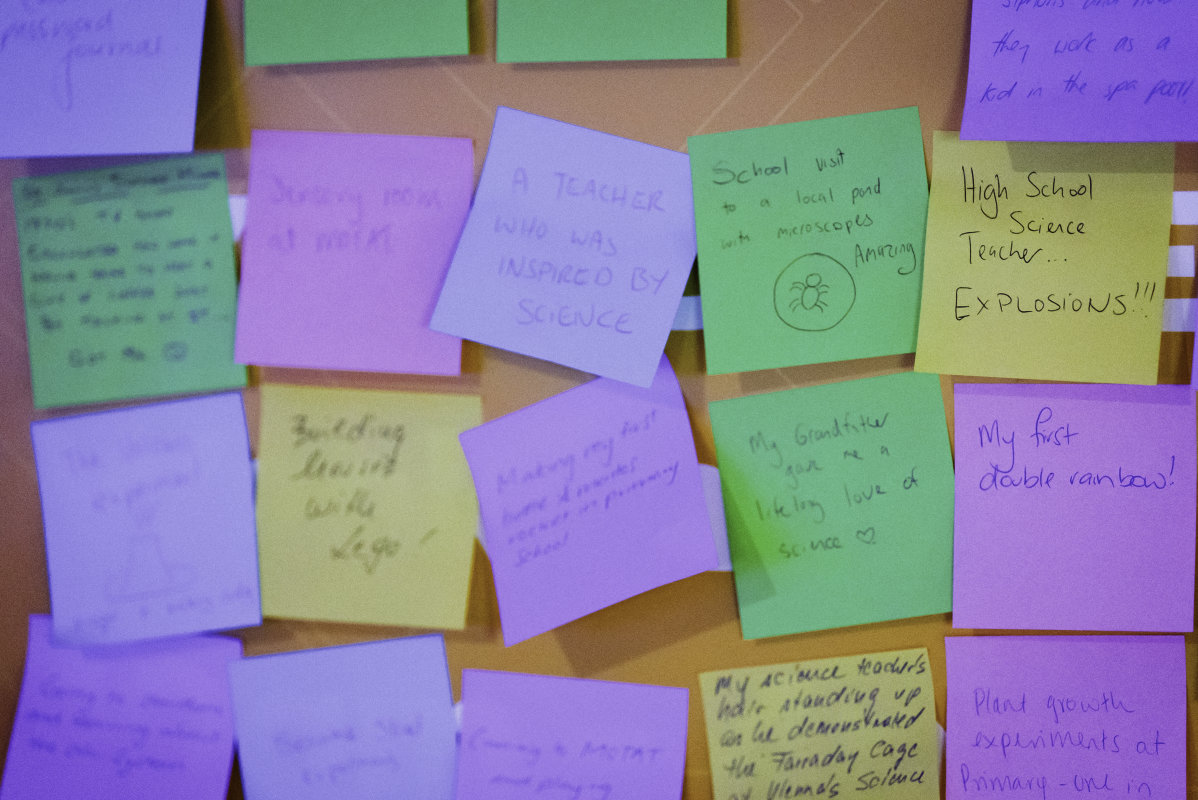
Who is your favourite NZ tech innovator/scientist or mātauranga Māori knowledge holder and why?
“Someone I would really love to meet if I had a time machine, is the innovator Richard Pearse – imagine visiting him in his shed as he tinkered away on some new invention?”
Esther: Currently, I’m fangirling Dame Juliet Gerrard. Juliet is the Chief Science Advisor to the Prime Minister. I’ve meet her briefly a couple of times and each time she was a strong communicator and so clever and personable – such a powerful combination.
Reni: My favourite innovator is the future innovator – we have so many cool people and communities currently doing amazing things and I love their work! But whenever I consider the future and look at the potential of our rangatahi, I am so excited by the possibilities of what they can create and build.
Julie: This question would have a different answer every time you asked me, but my favourite one right now is a Hamilton guy, Simon Clark, who designed and 3D-printed an almost life-sized Tyrannosaurus Rex in his backyard shed. I think he's a great example of a Kiwi innovator – he just had an idea and got on and did it because he could.
Tanya: Someone I would really love to meet if I had a time machine, is the innovator Richard Pearse – imagine visiting him in his shed as he tinkered away on some new invention? Luckily for us we will have one of his fabulous planes in the new science and technology centre so lots of people can get up close with one of his creations.
Jess: Johnson Witehira is top of my list. An artist, designer, researcher working in a heap of mediums. His goal is to bring Māori culture into all aspects of Aotearoa New Zealand. A prolific yet deeply intelligent practitioner he has spent years focused on decolonising approaches to teaching art and design and has also set up an organisation that is focused on designing futures through an indigenous lens.
Scott: Although not strictly technology or science-based, but an innovator in her own right, I love what Kiwi/Dutch designer Sabine Marcelis is doing. She is really pushing what materials can do, in particular glass, and playing with transparency, light and scale. I hope examples like hers will show that young people can make it on the international stage and bridge the gap between commercial design and artistic exploration.
Phoebe: I would love to meet Siouxsie Wiles and Toby Morris! I think the work they did during the Covid pandemic was amazing, illustrating all those complex scenarios and public health messages into cutesy comics. In such an uncertain time, they championed this awesome science communication, when they could have just binged Netflix like the rest of the country!
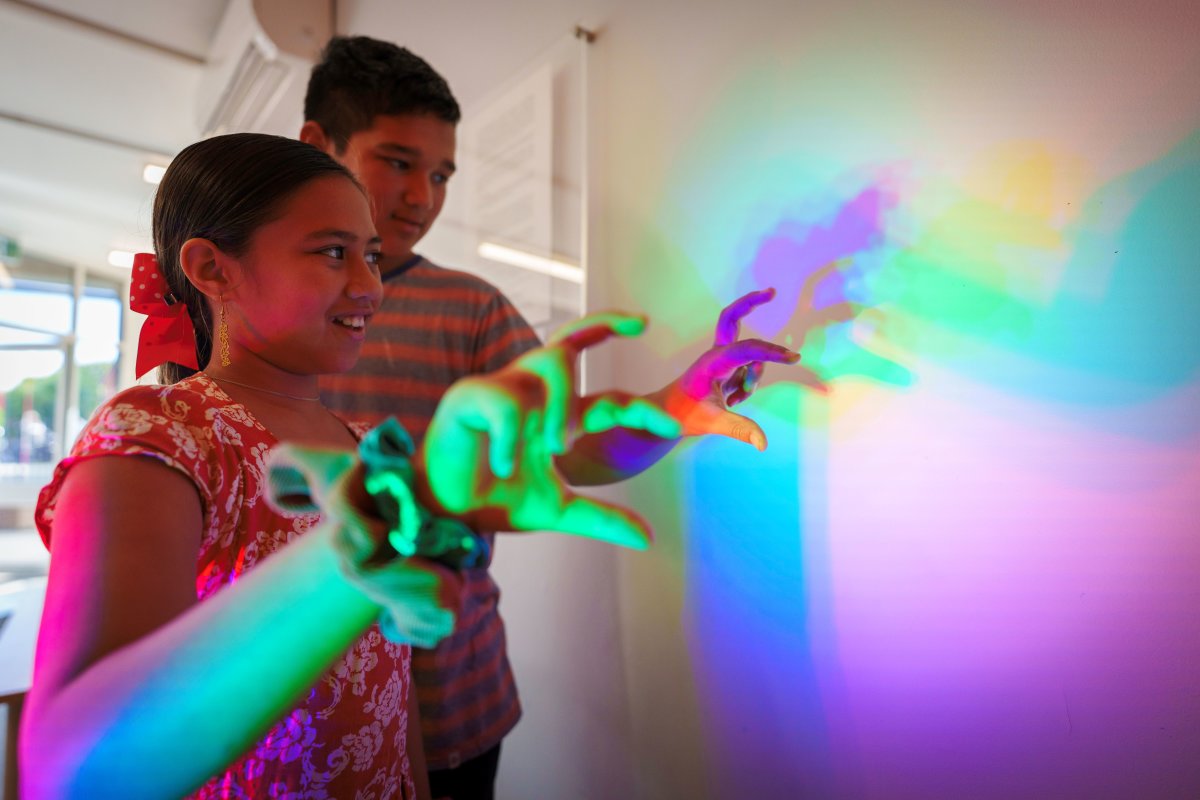
What excites you most about the new science and technology centre?
“I can’t wait to see Building 5 jam-packed with babies, kids, teens, parents, and grandparents! That is going to be a sweet, sweet moment.”
Esther: That it can become a touchstone in central Tāmaki, a pipeline for the next generation of innovators. A place where individual disciplines are irrelevant, and coming together to play and create is its reason for being. I also hope this centre becomes known for showcasing innovation that brings about a more equitable and regenerative future for all. I can’t wait to see Building 5 jam-packed with babies, kids, teens, parents, and grandparents! That is going to be a sweet, sweet moment.
Reni: The centre will be a space that nurtures learning, fun and kōrero about science, technology and mātauranga Māori. I hope that by bringing these three topics together in the centre, it will create a thirst for more knowledge and inspire passion and creativity in our rangatahi. Innovation is in our whakapapa and it’s in our future too!
Julie: That this centre will be a place where MOTAT can lean into our goal of inspiring the innovators of tomorrow; that we can build great interactives to support teaching science and technology; and that students will be so excited to deep dive, climb on, get into, and interact with all the stuff we're designing.
Tanya: It’s a huge challenge, but I think we will create something to make a lot of people very happy – kids, because they can have fun and not even realise they are learning about science and technology; parents, because their kids are having fun, and there will be things for them to enjoy too; and teachers, because all the juicy content we provide will make classroom lessons easier.
Jess: I hope kids of all ages visit and have fun exploring colourful stories and being immersed in technology. Ideally our visitors will forget that they're learning and just want to come back for more!
Scott: For me it is the idea of giving the visitor something they have never experienced before and that feels slightly different every time they visit. I have tried to look at the design from all perspectives whether you are six months old, lying on your back, or you are 90 years old experiencing it along with two generations younger than you.
Phoebe: It feels like a centre where everyone will belong. Where everyone can see themselves reflected and feel inspired. I want to see all different ages coming together to explore, and people spending HOURS in there, with kids being dragged home by parents!
